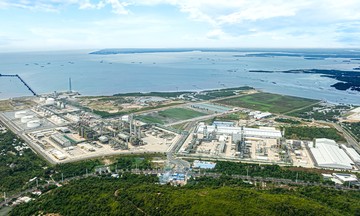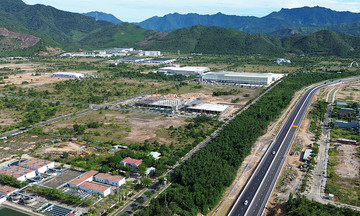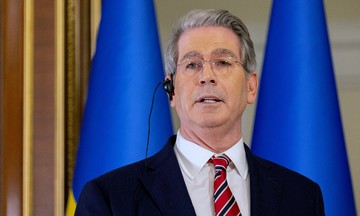Data released by Eurostat, the European statistical agency, shows that the eurozone's second-quarter GDP rose 0.1% compared to the first quarter. However, compared to the same period last year, the region's GDP increased by 1.4%.
Reuters assessed the eurozone economy as "better than feared," as experts had previously predicted zero growth in the second quarter compared to the first and only a 1.2% increase year-on-year. For the entire 27-member European Union, second-quarter GDP grew by 0.2% compared to the first quarter and 1.5% year-on-year.
Bert Colijn, chief economist at ING bank (Netherlands), said the second-quarter growth was a positive signal, demonstrating the resilience of the eurozone economy. "Despite the uncertainty that dominated the first half of the year, the cumulative growth of the first two quarters is still not disappointing," he said.
 |
Customers shopping in Madrid, Spain on 15/2/2024. _Photo: Reuters_ |
Within the bloc, Spain continued to lead with a 0.7% quarterly increase, followed by Portugal (0.6%) and Estonia (0.5%). France also grew above average at 0.3% thanks to increased car and aircraft production, despite weak domestic consumption. Conversely, Italy and Germany both declined by 0.1%. Compared to the same period in 2024, all countries experienced positive growth.
Regarding the upcoming outlook, the framework trade agreement reached between the US and the EU has helped reduce uncertainty and improve growth prospects, according to Reuters. Germany, the economic powerhouse, plans to significantly increase public spending to support growth and offset much of the impact of tariffs, experts say.
"The level of uncertainty may be easing, especially after the agreement with the US. Even before that, businesses in the service and manufacturing sectors had begun to show signs of renewed optimism," Colijn said.
Investors predict the European Central Bank (ECB) is nearing the end of its monetary easing cycle after lowering its key interest rate to 2%. The market currently estimates only a 50% probability that the ECB will continue to cut interest rates before December, and it may even start raising them again by the end of 2026.
Regarding challenges, AP suggests the 15% import tariffs imposed by the US on European goods will increase export costs, forcing businesses to either pass the tax burden onto American consumers or accept reduced profits. Additionally, the US-EU agreement is still unsigned with many details to be finalized, meaning businesses may have to wait several more months before feeling confident enough to invest.
Overall, the ING expert assesses that trade fluctuations will continue to have an impact, causing slow GDP growth. "In the short term, we shouldn't expect miracles, but at the same time, signs of recovery are gradually becoming apparent in the eurozone economy," Colijn said.
Phien An (_according to Reuters, AP, ING_)












